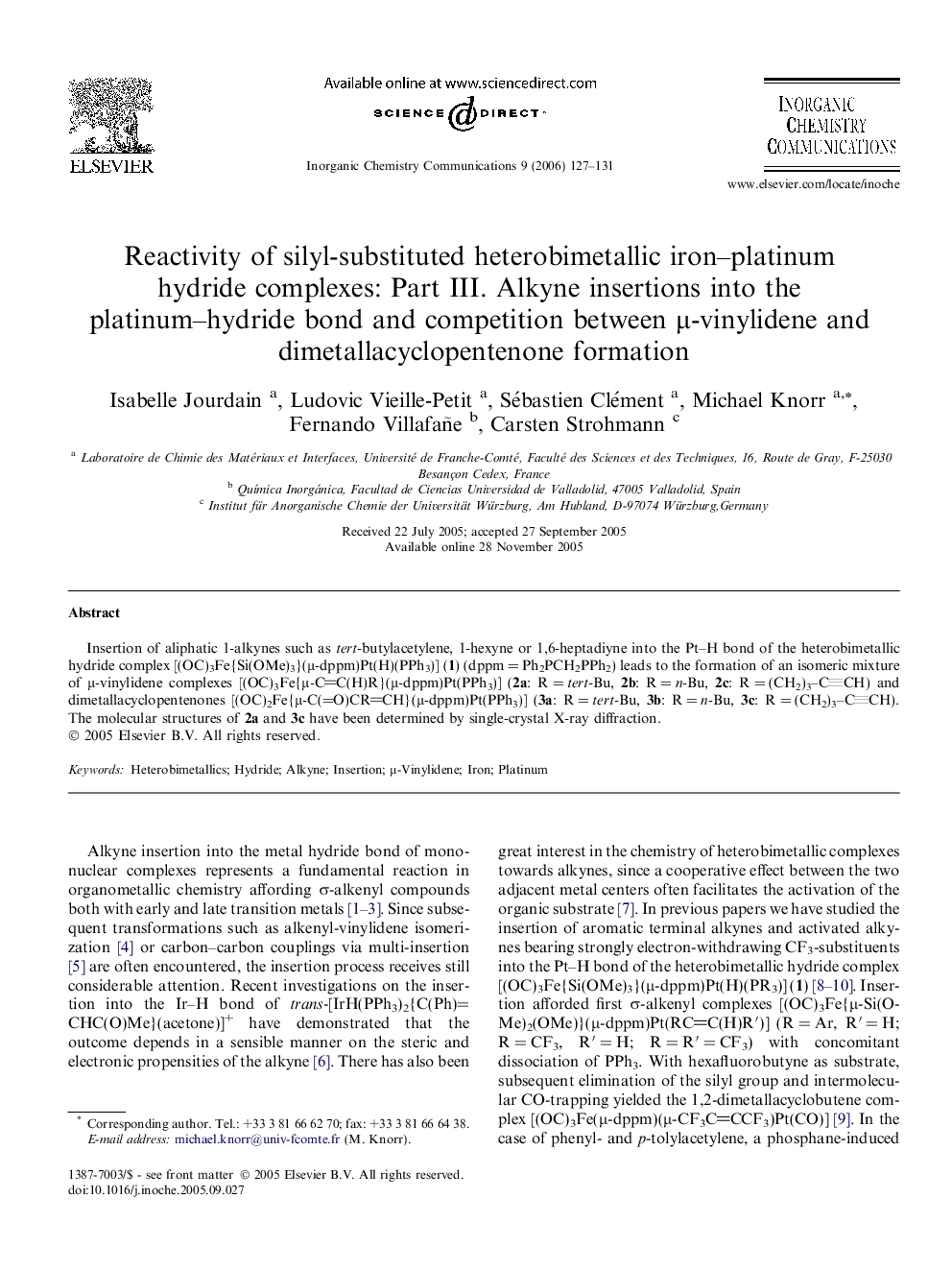| Article ID | Journal | Published Year | Pages | File Type |
|---|---|---|---|---|
| 1305054 | Inorganic Chemistry Communications | 2006 | 5 Pages |
Insertion of aliphatic 1-alkynes such as tert-butylacetylene, 1-hexyne or 1,6-heptadiyne into the Pt–H bond of the heterobimetallic hydride complex [(OC)3Fe{Si(OMe)3}(μ-dppm)Pt(H)(PPh3)] (1) (dppm = Ph2PCH2PPh2) leads to the formation of an isomeric mixture of μ-vinylidene complexes [(OC)3Fe{μ-CC(H)R}(μ-dppm)Pt(PPh3)] (2a: R = tert-Bu, 2b: R = n-Bu, 2c: R = (CH2)3–CCH) and dimetallacyclopentenones [(OC)2Fe{μ-C(=O)CRCH}(μ-dppm)Pt(PPh3)] (3a: R = tert-Bu, 3b: R = n-Bu, 3c: R = (CH2)3–CCH). The molecular structures of 2a and 3c have been determined by single-crystal X-ray diffraction.
Graphical abstractInsertion of terminal aliphatic alkynes into the Pt–H bond of the heterobimetallic hydride complex [(OC)3Fe{Si(OMe)3}(μ-dppm)Pt(H)(PPh3)] (1) affords as minor isomer the μ-vinylidene compounds [(OC)3Fe(μ-CC(H)R)(μ-dppm)Pt(PPh3)] (2) and as major isomer the dimetallacyclopentenone complexes [(OC)2Fe(μ-C(O)CRCH)(μ-dppm)Pt(PPh3)] (3).Figure optionsDownload full-size imageDownload as PowerPoint slide
